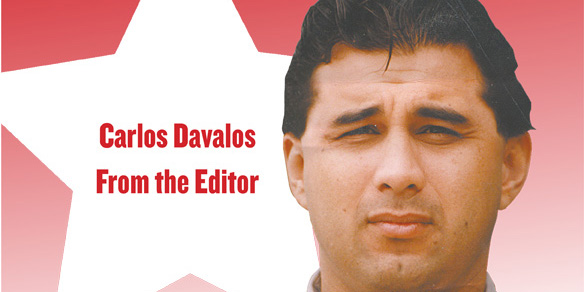Local and state economists, business and community leaders, will gather in downtown San Diego Friday to discuss the impact of state budget’s on the local and regional economy.
At this year’s South County Economic Development Summit, local elected officials, including Assembly member Ben Hueso, Chula Vista Councilwoman Pamela Bensoussan and National City Mayor Ron Morrison, are expected serve as panelists to discuss economic problems at the state level.
“They (the state) found another way to shift money from local government to state government,” Morrison said. “At the local level, that means we have less service while they continue to have the same amount of employees.”
Morrison said the biggest economic hit to National City is that the proposed elimination of redevelopment will curtail ongoing projects.
In March, California Gov. Jerry Brown made the proposal to help bridge the state’s estimated $26 billion budget deficit.
“What we’ve seen on a local level as far as what the state legislators are doing, is that they are coming up with Band Aids that will further cripple the local economy,” Morrison said. “It’s jeopardizing a lot of projects in our city.”
Bensoussan agreed, saying it’s the biggest setback for Chula Vista.
“We have programs that were funded and shovel ready, such as the Third Avenue Streetscape makeover,” she said. “This important project, currently somewhat in limbo, would be a catalyst for revitalization in Western Chula Vista, but part of the funding is now in question.”
The National City and Chula Vista City Council voted in July and August, respectively, to participate in a voluntary alternative redevelopment program to keep redevelopment alive.
The decision to opt in to this program will cost the cities more than $4 million each for the 2011/12 fiscal year and more than $1 million each to keep it going.
Morrison said as a consequence of financial mismanagement at the state level, taxpayers won’t see the economy turn around for another 7 or 8 years.
“And that must be through some prudent decisions through state, local and nationwide,” he said. “There is a lot of overspending and programs that are being duplicated.”
Morrison added there are also areas that need to be outsourced.
“We need to look at things efficiently,” he said. “They (state legislators) need to get away from what they’ve always done … state leaders are too involved in bureaucracy.”
The unemployment rate for Chula Vista was 11.7 percent and National City was 19 percent in December 2010, according to the San Diego Workforce Partnership.
Assembly member Ben Hueso, whose district covers parts of National City and Chula Vista, said that making economic development a priority means putting people back to work.
“Especially in health care and other important programs, that help Californians,” he said. “We need to focus on making more resources available. The wrong thing to do is to pay Californians less to work. Eventually we would eliminate our middle class.”
According to a South and East San Diego County Comprehensive Development Strategy compiled in 2011, aging infrastructure affects serving the existing business base and attracting new businesses.
Morrison said that infrastructure is critical in producing projects and stable jobs.
“We’re dealing with an infrastructure that was built in the 1950s and it’s falling apart,” he said. “We should concentrate one time funds to create on going jobs and also look at government spending.”
Bensoussan said that traditional revenue like property and sales taxes have dried up due to the foreclosure crisis and a lack of consumer purchasing.
The median housing price in Chula Vista dropped from $525,000 in Dec. 2006 to $275,500 in February 2009, according to the 2011 comprehensive study.
Furthermore, at the beginning of the nation’s foreclosure crisis Chula Vista was in the top 10 cities with the highest foreclosure rates and had the most foreclosures as of Aug. 5, 2009 with 4,538, while the city of National City had 859.
“It is a huge challenge to prevent this situation from effecting levels of service to residents and impacting our quality of life,” Bensoussan said.
Hueso said border commerce is also critical to creating more jobs.
“Reducing border wait times by 15 minutes would produce an extra $1 million in the business industry,” Hueso said. “We need to support innovation to bring in the revenue. We need to focus on small business.”















